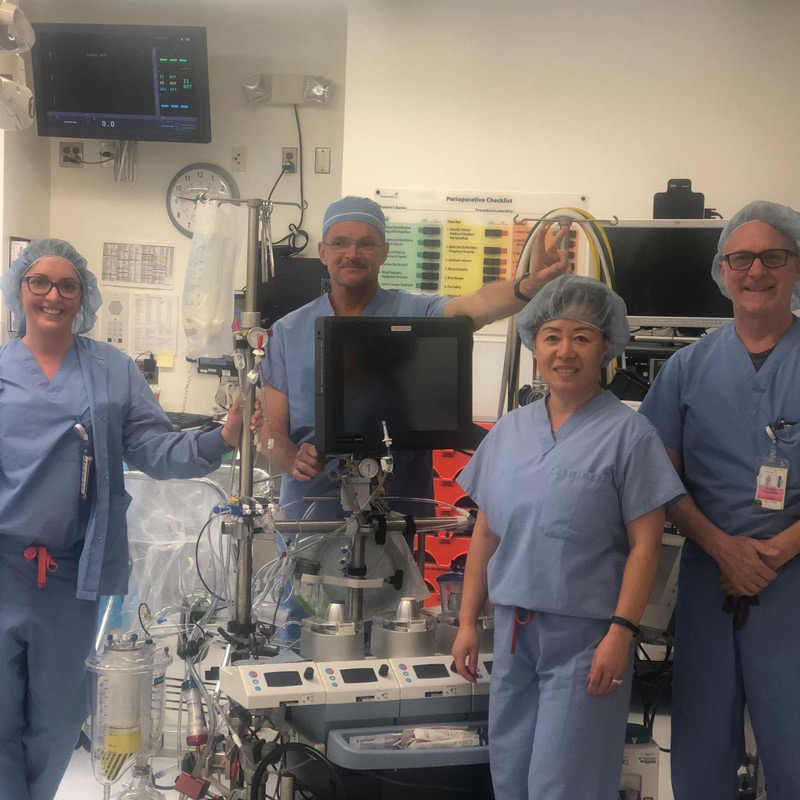When children need heart or lung surgery, they not only have to rely on their care team, but also the equipment that takes over the role of their vital organs during surgery. Without equipment, such as the cardiopulmonary bypass (CPB) machine and the extracorporeal membrane oxygenation (ECMO) machine, surgeries would be nearly impossible to perform.
The CPB and ECMO machines pump and oxygenate blood throughout the body, allowing for the heart and lungs to rest. While the CPB machine is used during surgery, the ECMO machine can be used before or after surgery if necessary based on the patient’s condition. In some instances, the ECMO machine supports a patient’s vital organs during a serious infection. In other cases, the ECMO is used after an extensive surgery to help with recovery.
The men and women who operate the CPB and ECMO machines are called perfusionists.
Recently, Shaun Setty, M.D., who serves as The Larry and Helen Hoag Foundation Endowed Chair in Pediatric Cardiovascular Surgery, medical director of pediatric and adult congenital cardiac surgery at Miller Children’s & Women’s Hospital Long Beach, as well as interim medical director adult cardiac surgery at MemorialCare Long Beach Medical Center, oversaw a study that was conducted by a group of perfusionists, including Catrina McGrath, at Miller Children’s & Women’s.
The study aimed to find out how long the machines could be set up and stored for in terms of functionality and sterility. With this information, the care teams can ensure they’re not exposing patients to harmful bacteria that can cause an infection.
There’s never been a comprehensive study conducted that indicates the definite amount of time an extracorporeal circuit can be set up for prior to being used without posing a threat to a patient’s health.
“We’re hoping to help other hospitals know how long these pieces of equipment can be set up without having any adverse effects,” McGrath says. “It’s a question that most hospitals and perfusionists have. Hospitals have a protocol for how long these machines can be used, but they don’t have any evidence that says the definite amount of days.”
For roughly five months, the team collected and analyzed blood gases, blood tests that measure oxygen and carbon dioxide levels and cultures from the equipment.
Catrina says that the team hopes to share what they discovered with the rest of the cardiology world by publishing the results in medical journals and presenting at conferences.
The perfusionists at the Children’s Heart Institute at Miller Children’s & Women’s initiated this study to give patients more dependable care. The Children’s Heart Institute is constantly evolving by not staying complacent, and by constantly asking ‘what could be better?’ Their study will answer a long-standing question and have a large impact on the medical community.


